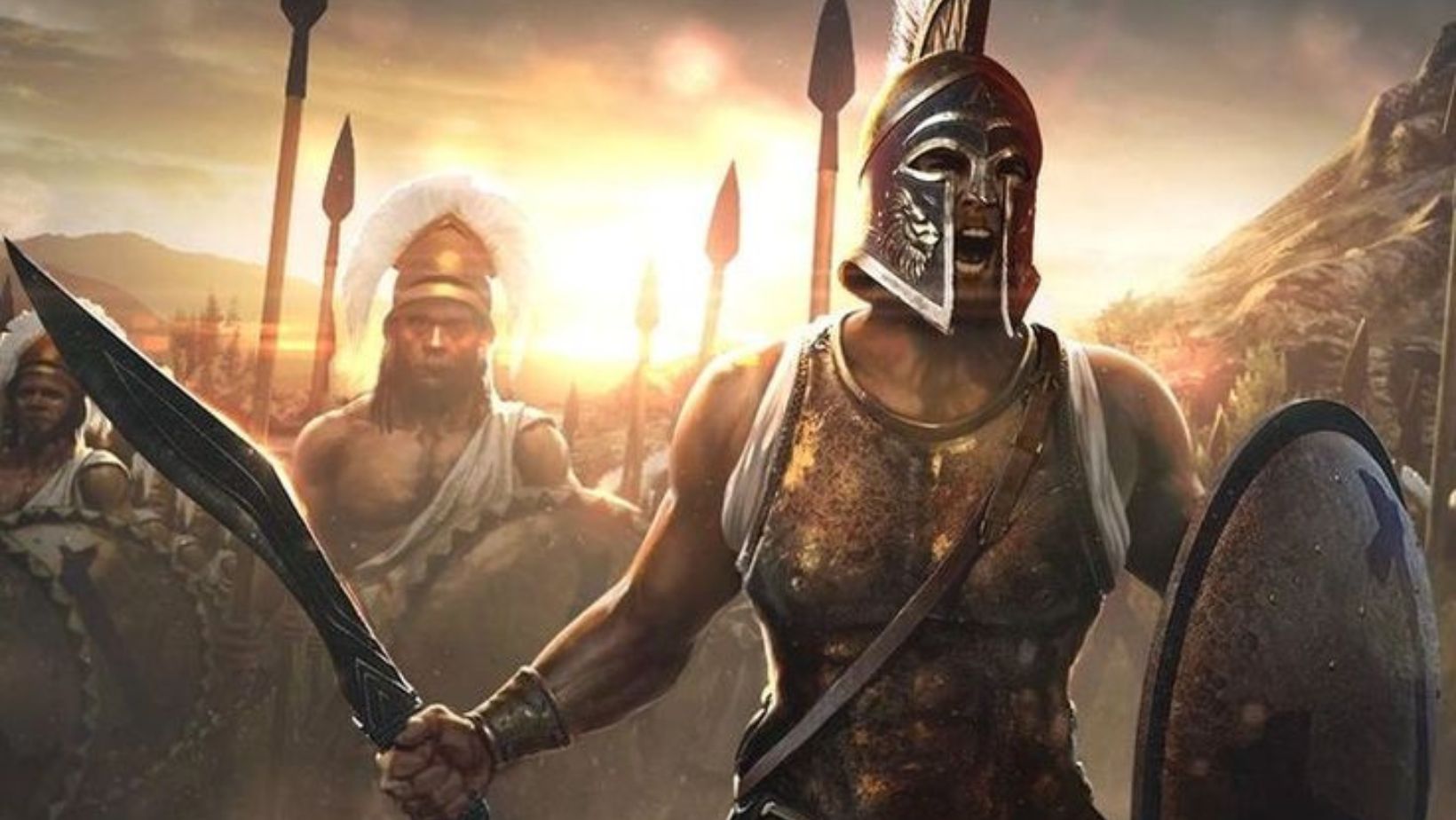Ever wondered about the backbone of Sparta’s fierce leadership? Right in the mix of it all stands King Leonidas, a name that rings out with stories of guts and glory. The King Leonidas family tree is not just a list of names; it represents a lineage steeped in valor, shaping the destiny of one of ancient Greece’s most formidable states. From Anaxandridas II’s quest for an heir to Gorgo’s wisdom, each member played their part against Persia’s might.
Digging into our ancestors isn’t just about mapping out family trees; it’s more about discovering how the stories of Spartan kings turned ordinary folks into legends. How did these familial ties influence strategies at Thermopylae? What can we learn from them today?
Table of Contents:
- The Agiad Dynasty of Sparta
- Leonidas’ Rise to Power
- The Greco-Persian Wars
- The Battle of Thermopylae
- Leonidas’ Legacy
- Conclusion
The Agiad Dynasty of Sparta: King Leonidas Family Tree

The Agiad dynasty was one of the two royal families that ruled the ancient Greek city-state of Sparta. This powerful lineage produced some of the most famous Spartan kings, including the legendary King Leonidas.
King Anaxandridas II, who ruled Sparta in the mid-6th century BCE, faced a major challenge when it came to producing a male heir. Despite being married to his niece for many years, the couple remained childless. Under pressure from the city’s ephors to ensure the continuity of the Agiad dynasty, Anaxandridas II reluctantly took a second wife.
Cleomenes I Takes the Throne
Anaxandridas II’s second wife gave birth to a son named Cleomenes, who became the heir apparent to the Spartan throne. However, in a surprising turn of events, Anaxandridas II’s first wife also became pregnant and bore a son named Dorieus shortly after Cleomenes’ birth. This complicated the line of succession and set the stage for future rivalries within the Agiad dynasty.
Dorieus’ Claim and Exile: King Leonidas Family Tree
As Cleomenes I ascended to the throne following his father’s death, his half-brother Dorieus contested his claim, believing himself to be the rightful king. Unsuccessful in his attempt to seize power, Dorieus ultimately chose to leave Sparta and establish a colony in Sicily. Tragically, he was killed in battle shortly thereafter, leaving Cleomenes I to rule without further challenges from within the Agiad dynasty.
Leonidas’ Rise to Power: King Leonidas Family Tree
Born around 540 BCE, Leonidas was the third son of King Anaxandridas II and his first wife. Despite being a younger son, Leonidas’ path to the Spartan throne was paved by a series of unexpected events and strategic alliances.
Leonidas further solidified his position within the Agiad dynasty by marrying Gorgo, the daughter of his half-brother Cleomenes I. This union not only strengthened Leonidas’ familial ties but also provided him with a powerful ally in Gorgo, who would later become an influential queen and advisor in her own right.
Becoming the Heir Apparent
With the untimely deaths of both Cleomenes I and Dorieus, Leonidas found himself next in line for the Spartan throne. As the eldest surviving son of Anaxandridas II, Leonidas was poised to inherit the kingdom and continue the Agiad dynasty’s rule.
Ascending to the Throne: King Leonidas Family Tree
Around 490 BCE, Leonidas became the king of Sparta following Cleomenes I’s death. As the new Agiad ruler, Leonidas faced the daunting task of leading his city-state through an increasingly turbulent period in Greek history, as the Persian Empire began to set its sights on conquering the Greek mainland.
The Greco-Persian Wars: King Leonidas Family Tree
The Greco-Persian Wars, a series of conflicts between the Persian Empire and the Greek city-states, had a profound impact on Leonidas’ reign and legacy. As the Persian threat loomed larger, Sparta found itself at the forefront of the Greek resistance.
In 490 BCE, Persian King Darius I launched an invasion of Greece, which ultimately culminated in the Battle of Marathon. Although the Persians were defeated by the Athenians and their allies, this initial incursion foreshadowed the larger conflict to come.
Xerxes’ Ambitions
Following Darius I’s death, his son Xerxes I ascended to the Persian throne with a burning desire to avenge his father’s defeat and subjugate the Greek city-states. Xerxes began amassing a colossal army, intent on conquering Greece once and for all.
Preparing for War: King Leonidas Family Tree
As news of Xerxes’ impending invasion spread, Leonidas and the other Greek leaders recognized the urgent need for unity and preparation. Alliances were forged, and plans were made to defend against the mighty Persian forces. Leonidas, known for his military prowess and leadership, played a crucial role in rallying the Greek city-states to face this unprecedented threat.
The Battle of Thermopylae: King Leonidas Family Tree
In 480 BCE, Leonidas led a small force of around 7,000 Greek soldiers, including his famous 300 Spartans, to defend the narrow pass of Thermopylae against Xerxes’ invading army. This legendary battle would come to define Leonidas’ legacy and the indomitable spirit of Sparta.
Recognizing the vast numerical superiority of the Persian forces, Leonidas devised a strategy to use the narrow terrain of Thermopylae to his advantage. By positioning his men at the bottleneck of the pass, Leonidas hoped to negate the Persians’ numbers and inflict heavy casualties on the invaders.
The Betrayal of Ephialtes
Despite the Greeks’ valiant efforts, the tide of the battle turned when a local shepherd named Ephialtes betrayed the Greeks by revealing a hidden path that allowed the Persians to outflank Leonidas’ forces. Upon learning of this treachery, Leonidas made the fateful decision to dismiss the bulk of the Greek army, choosing to make a final stand with his Spartans and a handful of loyal allies.
The Last Stand of the 300: King Leonidas Family Tree

In one of history’s most famous last stands, Leonidas and his 300 Spartans fought to the bitter end against the overwhelming Persian forces. Although they were ultimately overwhelmed and killed to the last man, their sacrifice bought precious time for the rest of the Greek forces to regroup and ultimately defeat the Persians in future battles.
Leonidas’ Legacy
The impact of Leonidas’ leadership and sacrifice at Thermopylae reverberated throughout ancient Greece and beyond. His courage, tactical brilliance, and unwavering commitment to Sparta’s freedom inspired generations of Greeks and cemented his place in history as one of the greatest warriors of all time.
In the aftermath of Leonidas’ death, his wife Gorgo and their young son Pleistarchus were left to carry on his legacy. Gorgo, renowned for her wisdom and strength, played a crucial role in guiding Sparta through the challenges that followed, while Pleistarchus eventually succeeded his father as king.
Sparta’s Continued Resistance
Inspired by Leonidas’ sacrifice, Sparta and its allies redoubled their efforts to resist the Persian invasion. The Spartans played a pivotal role in the decisive Greek victories at Salamis and Plataea, ultimately driving the Persians from Greece and securing their freedom.
Remembering the Fallen King
Leonidas’ legacy lived on through the accounts of ancient historians like Herodotus and the countless works of art, literature, and film that have celebrated his courage and leadership. The monument erected at Thermopylae, bearing the famous epitaph “Go tell the Spartans, passerby, that here, by Spartan law, we lie,” serves as an enduring testament to the king who gave his life for the freedom of his people.
Key Takeaway: King Leonidas Family Tree
Dive into the drama of Sparta’s Agiad dynasty: From Anaxandridas II’s heir struggles, Cleomenes I’s unexpected rise, to Leonidas’ legendary stand at Thermopylae. Discover how marriages, alliances, and fierce battles shaped their rule and left a legacy that still inspires today.
Conclusion: King Leonidas Family Tree
In delving into King Leonidas family tree, we’ve traversed more than mere generations – we’ve journeyed through stories etched in time where courage was currency and honor was law. This lineage showcases not only Spartans’ unyielding spirit but also illuminates lessons on leadership and resilience that resonate well beyond antiquity.
So while Hollywood dazzles us with depictions far removed from historical truths, remember this – behind every tale are real people whose lives laid down foundations for narratives celebrated centuries later. Their existence reminds us that true strength often springs from unity and shared purpose.

